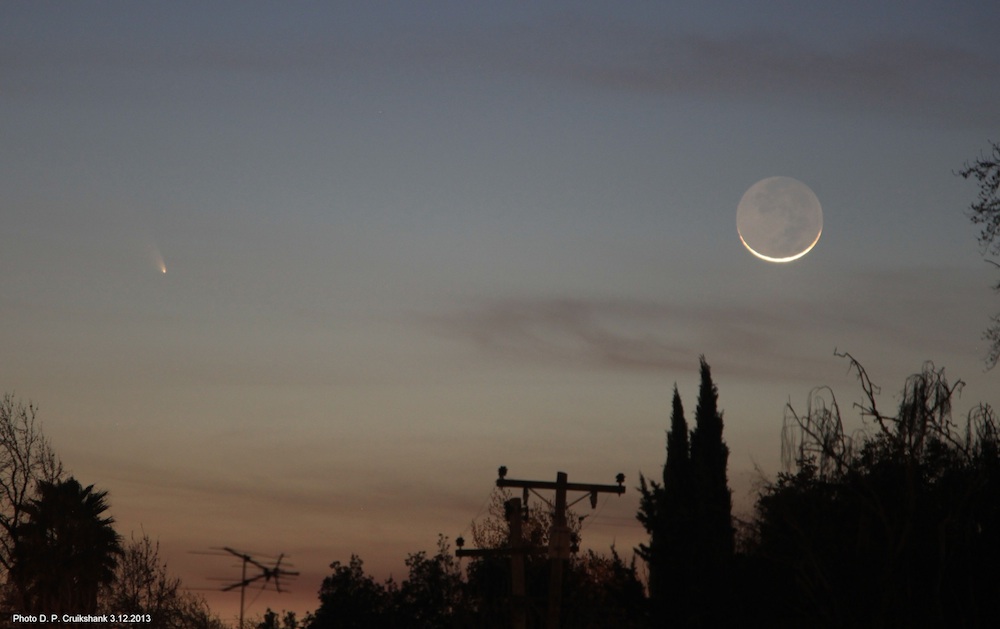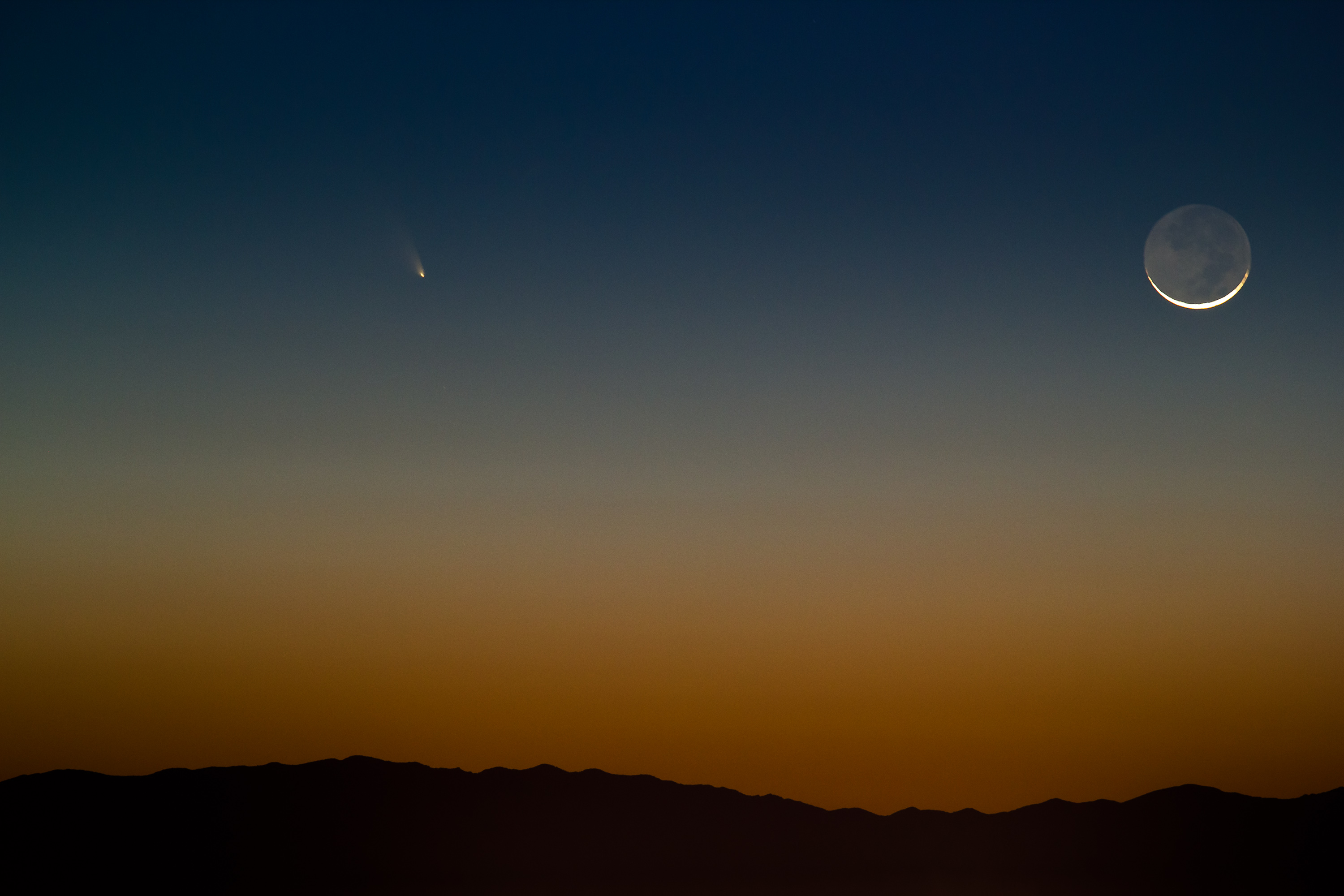Spectacular Comet and Moon View Wows Stargazers (Photos)

The Comet Pan-STARRS may be a challenge to spot in the evening sky, but it still dazzled stargazers around the world when it paired up with the moon Tuesday (March 12).
Comet Pan-STARRS is currently appearing low on the western horizon just after sunset, making it hard to pick out in the bright evening twilight for some observers. But on Tuesday evening, a slender crescent moon served as a celestial guide for those stargazers with clear, dark skies.
Just northwest of Rio Rancho, N.M., astrophotographer Josh Knutson and his 8-year-old daughter Aurora were amazed at the sight of Comet Pan-STARRS and the moon shining side by side.
"The seeing conditions were near-perfect, with stable air as the remaining clouds dissipated at sunset," Knutson told SPACE.com in an email. "My daughter Aurora and I were able to clearly see a fair amount of the comet tail without visual aid." [See photos of Comet Pan-STARRS and moon together]
Knutson said the comet and moon views were extra special because he was able to share it with his daughter. The two stargazers took turns posing with the moon, appearing as silhouettes in Knutson's images. "It's been great having her so involved," Knutson said.
While Knutson and his daughter had no problem spotting Comet Pan-STARRS, not every observer has been so lucky. While trying to snap images of the comet and moon over Las Vegas, photographer Tyler Leavitt learned the hard way how difficult separating Comet Pan-STARRS from the bright evening twilight could be.
"It was VERY difficult to find," Leavitt explained in an email. "I found it in binoculars first, then could barely see it with averted vision."
Breaking space news, the latest updates on rocket launches, skywatching events and more!
Still, Leavitt managed to snap picturesque images of Comet Pan-STARRS and a grinning crescent moon hovering in the serene twilight over Las Vegas.
In the Philippines, veteran night sky photographer Christopher Go even created a video of Comet Pan-STARRS in the night sky while tracking the celestial object with the moon.
"Clear skies today, so [a] great photo op for the moon and Pan-STARRS," Go wrote in an image alert. Go said he also captured an eye-popping video of Pan-STARRS and the moon setting together, which he hopes to unveil soon.
Comet Pan-STARRS is officially known as C/2011 L4 (PANSTARRS) and was discovered in June 2011 by astronomers with the Panoramic Survey Telescope and Rapid Response System (or PAN-STARRS). Scientists estimate that the comet takes more than 100 million years to orbit the sun once.
Pan-STARRS made its closest approach to Earth last week and was closest to the sun on Sunday (March 10). The object is one of several comets visible in the night sky this year. The Comet Lemmon has been closely tracked by amateur astronomers in the Southern Hemisphere since January, while the Comet ISON— which some scientists say could be a potential "comet of the century" — is making its way toward the inner solar system.
Comet ISON will be closest to the sun in late November, and has the potential to be spectacular during that time, but it could also fizzle out, NASA scientists have said. The comet is being closely watched by NASA astronomers and amateur observers.
On Sunday (March 17), Comet Pan-STARRS will play a bit part in another amazing stargazing sight: the close pairing of Jupiter and the moon.
Editor's note: If you snap an amazing photo of Comet Pan-STARRS, or any other celestial object, and you'd like to share it for a possible story or image gallery, please send images and comments, including location information, to managing editor Tariq Malik at spacephotos@space.com.
Email Tariq Malik at tmalik@space.com or follow him @tariqjmalik and Google+.Follow us @Spacedotcom, Facebook and Google+. Original article on SPACE.com.

Tariq is the award-winning Editor-in-Chief of Space.com and joined the team in 2001. He covers human spaceflight, as well as skywatching and entertainment. He became Space.com's Editor-in-Chief in 2019. Before joining Space.com, Tariq was a staff reporter for The Los Angeles Times covering education and city beats in La Habra, Fullerton and Huntington Beach. He's a recipient of the 2022 Harry Kolcum Award for excellence in space reporting and the 2025 Space Pioneer Award from the National Space Society. He is an Eagle Scout and Space Camp alum with journalism degrees from the USC and NYU. You can find Tariq at Space.com and as the co-host to the This Week In Space podcast on the TWiT network. To see his latest project, you can follow Tariq on Twitter @tariqjmalik.


